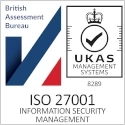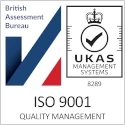15
+
YEARS OF
EXPERIENCE
1000
+
SUCCESSFUL
Projects
80
+
Satisfied
Clients

SharePoint data migration is a complex process that involves moving data from one SharePoint environment to another. This process can be daunting, especially for organizations with large and complex SharePoint environments. However, with the right strategy and tools, SharePoint data migration can be a smooth and successful process.
Why is SharePoint Data Migration Necessary?
There are several reasons why an organization might need to perform a SharePoint data migration. Some of the most common reasons include:
- Moving to a new hosting provider: If an organization is not satisfied with its current hosting provider, it may need to migrate its SharePoint environment to a new provider.
- Upgrading to a newer version of SharePoint: As Microsoft releases new versions of SharePoint, organizations may need to upgrade to take advantage of the latest features and security improvements. This often involves migrating data to the new version.
- Consolidating multiple SharePoint environments: If an organization has multiple SharePoint environments, it may be beneficial to consolidate them into a single environment. This can help to reduce costs and improve management.
- Migrating to the cloud: Many organizations are migrating their SharePoint environments to the cloud to take advantage of the benefits of cloud computing, such as scalability, flexibility, and cost savings.







Key Considerations for Successful SharePoint Data Migration
When planning a SharePoint data migration, there are several key considerations to keep in mind:
- User Training: After the migration is complete, it is important to provide user training to help them adapt to the new environment.
- Data Assessment: It is important to assess the size and complexity of your SharePoint environment before starting the migration process. This will help you to determine the best approach and tools for your migration.
- Data Cleaning: Before migrating your data, it is important to clean up your data to remove any duplicates, inconsistencies, or errors.
- Data Mapping: You will need to map your source data to your target environment. This involves identifying the corresponding objects in the target environment, such as sites, lists, libraries, and users.
- Migration Tools: There are a variety of tools available for SharePoint data migration, including Microsoft’s own SharePoint Migration Tool (SPMT) and third-party tools.
- Testing and Validation: It is important to test your migration thoroughly to ensure that all data is migrated correctly and that everything is working as expected in the target environment.
Managed Service Provider
Our modern approach to technology and strict security measures, Proxar is a leading Managed Service Provider in the UK with clients mostly around LondonDigital Transformation Services
Enhance your business with expert digital transformation services. Embrace innovation and optimize operations effectively.IT Infrastructure Services
Private Cloud, Public Cloud or on-prem infrastructures require management, monitoring and security services which we provide to the best standardsIT Support Services
Professional and reliable IT Support Services for businesses, cloud, users and infrastructures across the UKCyber Security Services
Cyber security services are professional services that help organizations protect their networks and data from cyber-attacksIT Outsourcing Services
For large size business IT Outsourcing is useful for implementing new technologies while small and medium size businesses outsource entire ITNetworking and Connectivity
We specialize in delivering top-tier networking and connectivity solutions tailored to meet the distinct needs of businesses across various industries.Linux Services
We offers comprehensive Linux services, ensuring security, efficiency, reliability, and expert support for businesses in the UK.
Common Challenges and Best Practices
SharePoint data migration can be a complex process, and there are several common challenges that organizations may encounter. Some of the most common challenges include:
- Large data volumes: Migrating large volumes of data can be time-consuming and resource-intensive.
- Complex site structures: Migrating complex site structures can be challenging, especially if the target environment has a different structure.
- Customizations and workflows: Migrating customizations and workflows can be complex, and it is important to carefully plan and test this process.
- User permissions: Migrating user permissions can be challenging, and it is important to ensure that users have the correct permissions in the target environment.
To overcome these challenges, it is important to follow best practices for SharePoint data migration. Some of the best practices include:
- Communicate with users: Keep users informed about the migration process and provide them with training to help them adapt to the new environment.
- Plan carefully: Develop a detailed migration plan that outlines all of the steps involved in the migration process.
- Choose the right tools: Select the right tools for your migration, based on the size and complexity of your environment.
- Test thoroughly: Test your migration thoroughly to ensure that all data is migrated correctly and that everything is working as expected in the target environment.
SharePoint data migration can be a complex process, but with careful planning and the right tools, it can be a successful process. By following the key considerations and best practices outlined in this article, organizations can minimize the risks associated with SharePoint data migration and ensure a smooth transition to their new environment.
As a result of increasing number of business expanding to the UAE market we are offering services for SharePoint Data Migration in Dubai.

answer time
satisfaction
score
on initial call
same business
day









